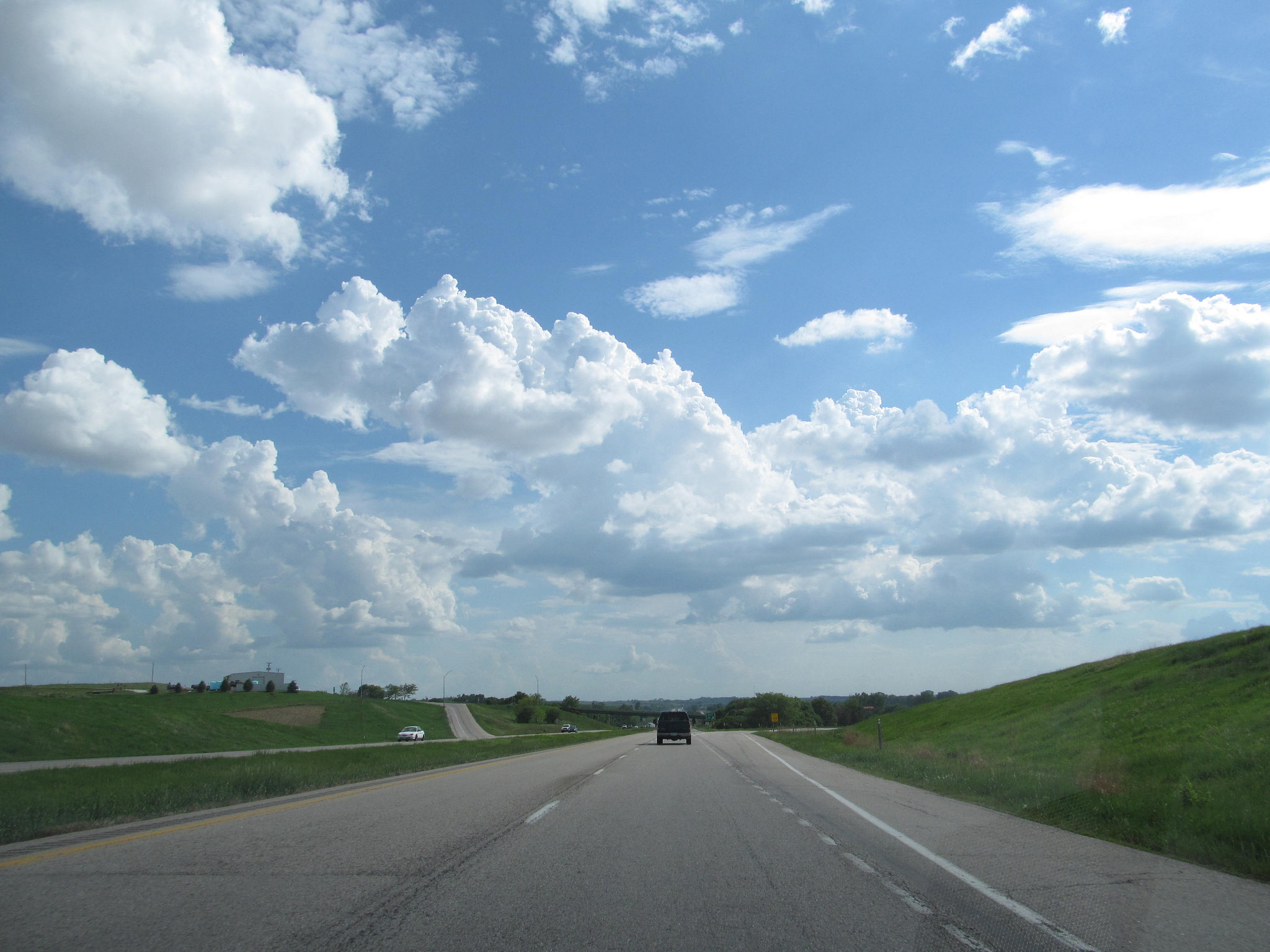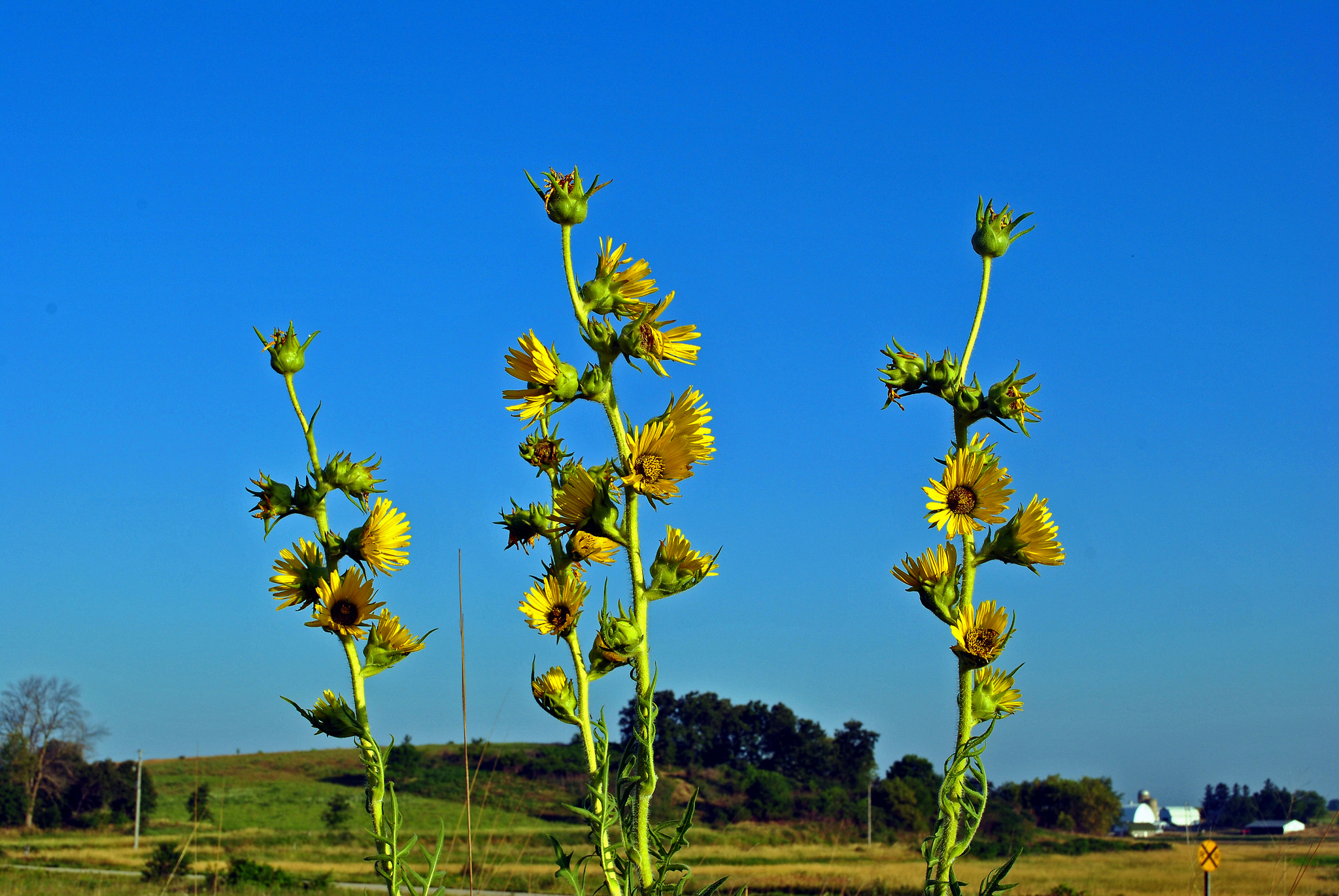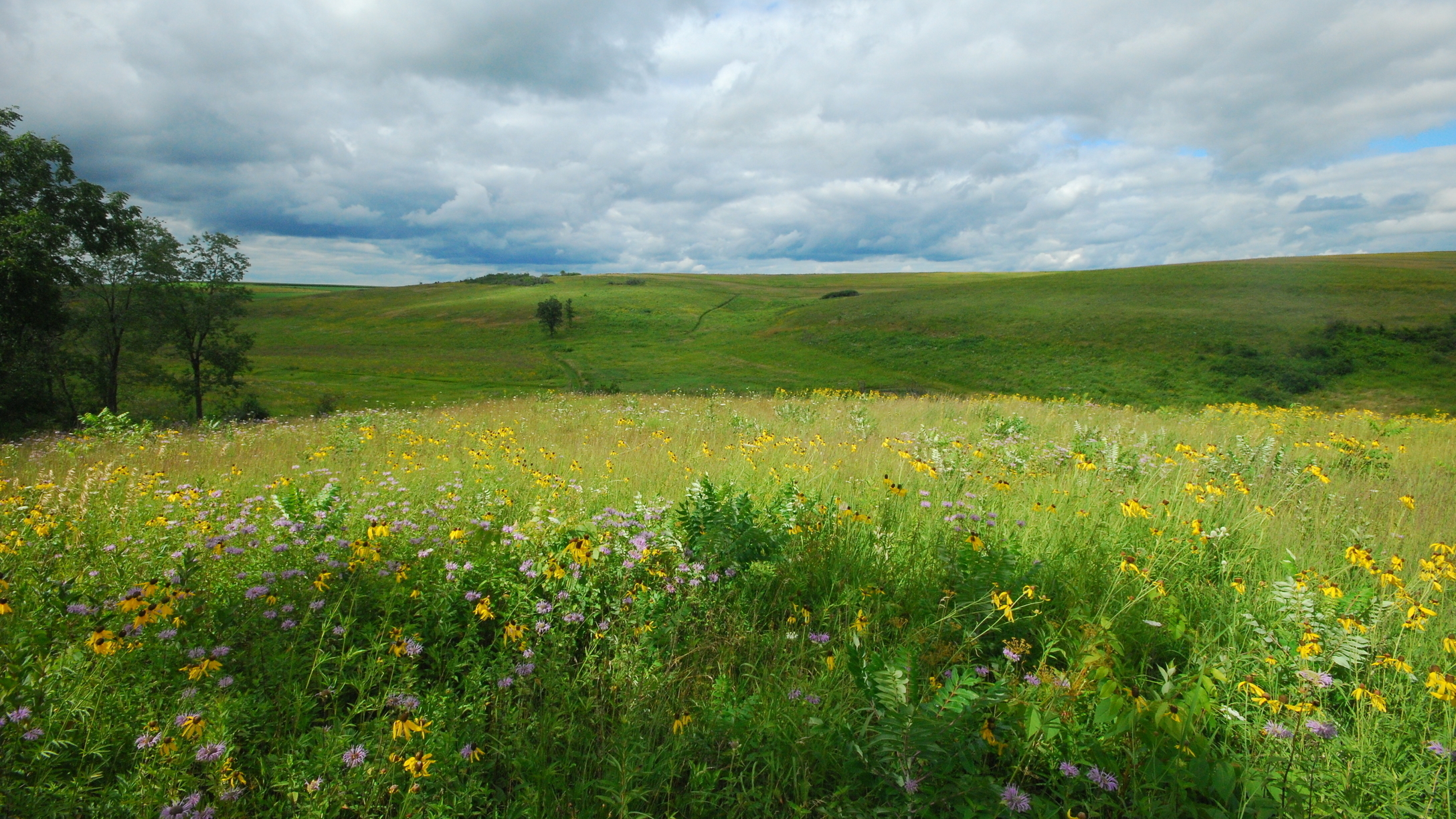As I drove across its flat, straight highways—drifts of sunny black-eyed susans, pale-blue patches of bee balm, and bright, spiky clumps of purple coneflower all punctuating the tall blades of native grasses growing in the ditches and median—Iowa appeared to be blanketed in wildflowers this July.
It’s a sight that belies the massive reworking of the landscape that began here in the 19th century and continues to this day. By way of draining wetlands, clear-cutting forests, straightening creeks, and, more than anything, plowing under the grasslands that generated the rich, black topsoil that made it a breadbasket, Iowa has gone from being 80 percent prairie to what is essentially one giant farm. Some prairie remnants—untouched stretches that have somehow escaped the onslaught of settlement and the increasing industrialization of agriculture—do still persist, ghosts of a lost landscape covering an acre here and a few acres there, but they amount to just one tenth of one percent of the vast grassland ecosystem they were once a part of.
Wildflowers do not figure heavily into my memories of growing up in Iowa. The summers of my midwestern youth recur as a study in greens. The high-gloss, saturated hue of corn leaves; the fuzzy, grey cast of soybean fields. The shimmering green of cottonwoods, leaves flipping every which way, and the drab shadows of stately bur oaks that buffered the fields. The only other color to intrude into the green of the countryside was the golden haze of corn tassels that delineated the neat rows as they unfurled across a field. The roadsides, too, were colored in the palate of monoculture—grass trimmed short in the median, growing taller in the ditches, occasionally giving way to cattails in the low, damp spots. The prairie that once stretched across much of the middle third of the country was home to some 300 different species of wildflowers, of which I can only recall seeing a handful.

It’s not easy to be objective about the place you’re from, and when I saw ditches alight in prairie blooms this summer, I was fully willing to believe that it was me, not the ditches, that had changed. After all, the state’s Living Roadway Trust Fund, which exists in part to seed roadsides with wildflowers, was established nearly 30 years ago. I played with milkweed pods as a kid, and watched monarch caterpillars hatch into butterflies in my third-grade classroom, but The Prairie wasn’t something I ever identified with. As far as I could tell, it wasn’t even there—not in the ditch, nor the field. Or did I just not see it?
There’s more than one kind of prairie—shortgrass, tallgrass, mixed-grass—and with just a scattering of remnants remaining across the historic range, we should think of prairies, plural, in diminutive terms. But the endlessness of the landscape is still reflected in the way we talk about what remains today: The Prairie, The Great Plains. If we can’t see the lost prairie that we still talk about, can we understand what it was, what it meant, and make sense of what is left today?
The narrative of environmentalism and conservationism tells us that pre-colonial ecosystems were untouched—virgin—and that they were destroyed (and now, in turn, must be saved) by the human hand. This discounts the history of native people, who strategically burned prairie landscapes across the midwest, promoting delicious new growth for the bison they hunted. The prairie may have once been vast, and appeared pristine, but it was not untouched. Contemporary restoration efforts are similarly pointed: with topsoil disappearing, waterways brimming with nitrate pollution, and the sight of a monarch having turned from a momentary glimpse of an epic migration to a symbol for habitat loss and potential extinction, prairie is now a means of recovery. Prairie plantings are improving land, filtering runoff, giving a lifeline to wildlife. The milkweed patches and prairie rose thickets that have persisted in the few unfarmed corners of the state—the family cemeteries, rocky slopes, and old road and rail right-of-ways—are finally being folded back into the field that is Iowa (with the support of some generous conservation subsidy programs).
I know that there is now more prairie in Iowa because I have talked with researchers at Iowa State University who have spent the last 10 years studying the ecological and agricultural benefits of interspersing long strips of prairie into corn and soy fields. I know that there is now more prairie in Iowa because I have talked with Soil and Water Conservation District officials who told me about the farmers who, rather than decide between giving their land to one son or another, opted to plant their fields in wild grasses and flowers in exchange for a regular check from USDA. I know there is now more prairie in Iowa, but I am still not wholly sure if the ditches have changed, or if I have.
The naturalist Aldo Leopold, who was born in 1887 in Burlington, Iowa, 50 miles east along the wildflower-lined ditches of Highway 34 from my own hometown, wrote about the disappearing prairie as an issue of culture in 1949’s A Sand County Almanac. “Mechanized man, oblivious of floras, is proud of his progress in cleaning up the landscape on which, willy-nilly, he must live out his days,” Leopold writes in the essay “A Prairie Birthday.” “It might be wise to prohibit at once all teaching of real botany and real history, lest some future citizen suffer qualms about the floristic price of his good life.”
Leopold sees an intrinsic value in the mere existence of prairie, a point of view that allows for the shifting meanings the landscape can take on as time and contexts change. If prairie matters, a wild sunflower can represent both environmental utility in a cornfield and beauty in a ditch. It can represent resilience when spotted growing up through a cracked overpass from a car stopped in traffic on Chicago’s Southside, as hundreds of people took to the Dan Ryan Expressway to protest gun violence.
The land Aldo Leopold was writing about was a small remnant in a Wisconsin graveyard where, every July, he celebrated the bloom—the prairie birthday—of “a man-high stalk of compass plant or cutleaf Silphium, spangled with saucer-sized yellow blooms resembling sunflowers.” It was likely the last remaining Silphium in the county. “What a thousand acres of Silphiums looked like when they tickled the bellies of the buffalo is a question never again to be answered,” he wrote, “and perhaps not even asked.”

That summer, the remnant was finally mowed, and the future of the cutleaf Silphium—its sap used as a kind of chewing gum by Native Americans, its compass-oriented leaves used as a navigational aid by European settlers—became clear to Leopold: “for a few years my Silphium will try in vain to rise above the mowing machine, and then it will die. With it will die the prairie epoch.”
The epoch may be dead, but this summer, spires of compass-plant flowers reached up out of the ditches in Iowa—plants that may have made a return in the last 10 years, or may have been there all along.






